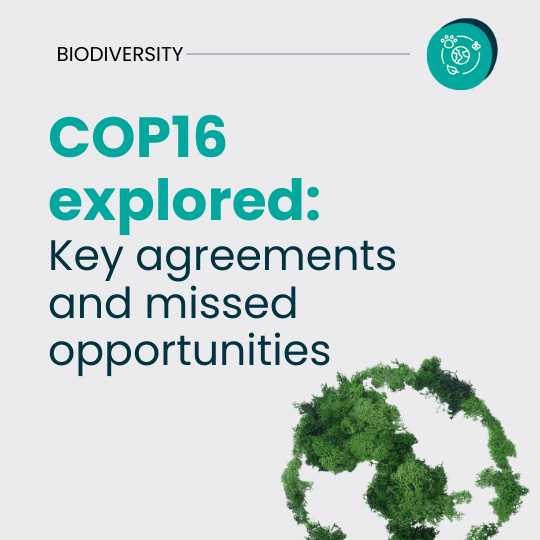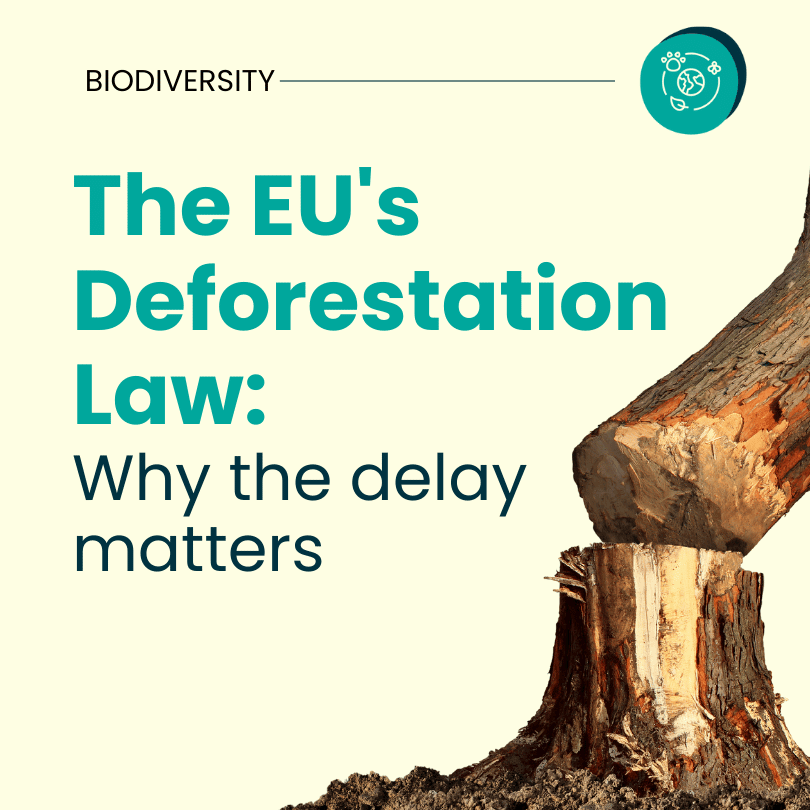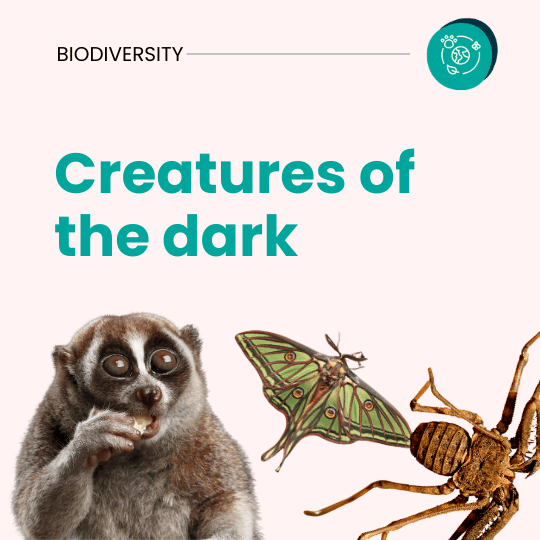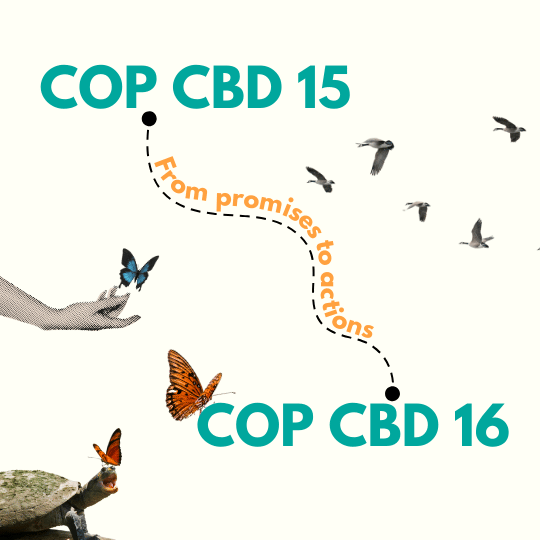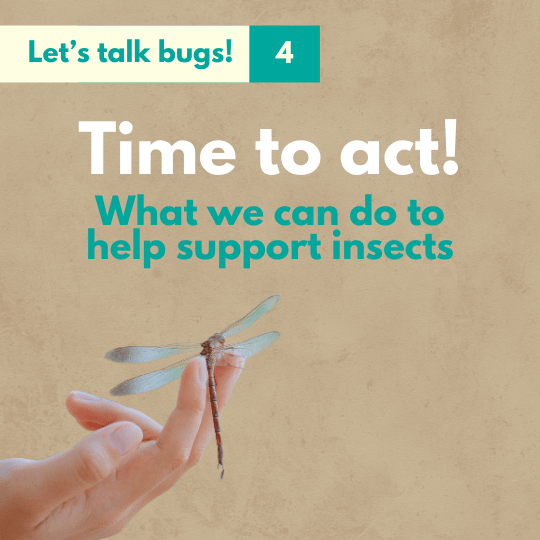
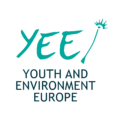
Ending Bottom Trawling: A Call for Real Protection of the Marine Environment
What is bottom trawling and why is it problematic
Bottom trawling is one of the most destructive fishing methods used worldwide, with as much as 40% of sea life being removed during a single trawling pass. The large weighted nets being dragged across the ocean floor are responsible for vast amounts of by-catch, discards and collapse of fish stocks.
Despite the restriction of human activities to conserve their rich biodiversity, Marine Protected Areas (MPAs) suffer greatly from the effects of bottom trawling. Even with its devastating and irreversible consequences, bottom trawling is still allowed in 90 percent of all offshore EU MPAs.
The impact of bottom trawling on marine ecosystems
Bottom trawling is responsible for reducing the complexity, productivity, and biodiversity of seafloor habitats, with sponges and corals facing the highest impacts. Unfortunately, most affected ecosystems are unable to recover from the damage they endure. For the few that do manage to recover, the estimated recovery time is estimated to be between 7.5 and 15 years.
The impact of bottom trawling on climate change
Bottom trawling not only causes significant harm to marine life, but according to a recent study, it also contributes up to 370 million metric tons of carbon dioxide to the atmosphere annually. The same study discovered that within an average of years, between 55 and 60 percent of emissions from underwater bottom trawling are released into the atmosphere, while the remaining CO2 can lead to more acidic conditions in the areas where it has been released, thus clearly contributing to the greenhouse effect and global warming of our planet.
The EU’s position on bottom trawling
Currently, there only exists an EU-wide ban on bottom trawling at depths greater than 800 metres, however the EU aims to extend a bottom trawling ban to all its MPAs by 2030, urging its Member States to draw up national roadmaps towards a bottom trawling plan as part of the 2023 Marine Action Plan (find our article about the EU’s Marine Action Plan here).
At the moment, Greece and Sweden are the only EU Member States to have announced a ban on bottom trawling in all their national marine parks and protected areas, with Sweden extending the ban to all its territorial waters (up to 12 nautical miles from the shore). This marks a significant step forward for these countries in the protection of marine biodiversity.
In contrast, the majority of EU countries have missed this year’s March deadline to outline national roadmaps for phasing out bottom trawling. The EU’s national governments need to demonstrate greater ambition for marine protection and commit to the Marine Action Plan and the EU Biodiversity Strategy 2030.
Protecting 30% of its marine areas by 2030 is incompatible with the highly damaging practice of bottom trawling, therefore the European Commission must take further action to ensure compliance with the existing legislation in countries that still permit bottom trawling inside the MPAs of their territorial waters.
YEE and GYBN calls for a ban of bottom trawling in Marine Protected Areas
As representatives of young people committed to environmental protection, Youth and Environment Europe and Global Youth Biodiversity Network Europe strongly advocate for the conservation of marine ecosystems and the promotion of sustainable fishing practices. Our position on the issue of bottom trawling comprises the following:
- YEE and GBYN Europe firmly oppose bottom trawling in Marine Protected Areas. This fishing method is highly destructive to seafloor ecosystems, causing irreversible damage to habitats such as coral reefs and seagrass beds. To achieve the 30×30 goal of protecting 30% of European waters by 2030, MPAs must offer genuine protection, which is incompatible with the destructive nature of bottom trawling. The practice of bottom trawling also needs to be reviewed in cases where it takes place close to MPA boundaries, in sensitive habitats such as spawning grounds, and in coastal waters.
- We show our strong support for ongoing initiatives by NGOs and civil society groups that advocate against bottom trawling. Notable examples include the joint campaign led by Oceana, Seas at Risk, Sciaena, and the Irish Wildlife Trust, as well as awareness raising and lobbying by WWF, Blue Ventures, the Blue Marine Foundation, Client Earth, and others. These organisations play a crucial role in raising awareness and driving policy changes.
Bottom trawling is a destructive practice that poses a significant threat to marine ecosystems and biodiversity.
As YEE and GYBN Europe, we urge EU Member States to prioritise ocean conservation and take decisive action. We firmly believe that young people, as the voice of the future, hold the power to enact the change they envision. With the recent EU elections, it is crucial for youth to push the newly elected MEPs to take action towards the protection of our oceans. Advocacy for stronger regulations, such as those in the Marine Action Plan, is essential to safeguard marine ecosystems. Join advocacy campaigns, engage with environmental organisations and use your voice to demand the preservation of our seas.
Help us spread the word! Share this statement
Learn more about marine conservation
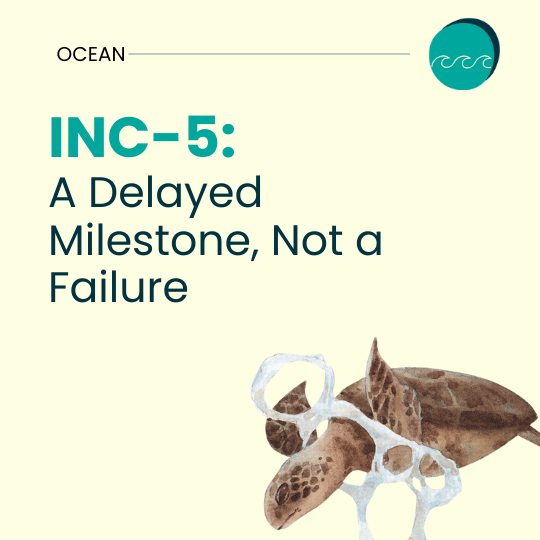
This session was supposed to be the “end of the beginning,” when the world would step out with the first-ever global plastic
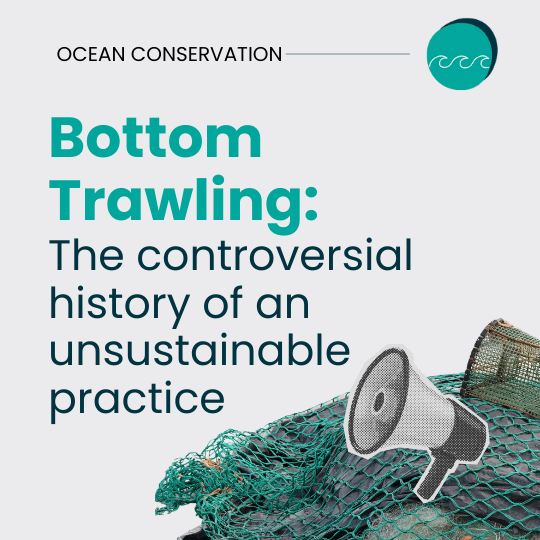
Bottom trawling involves dragging a weighted net or a rigid frame along the ocean floor. Despite its economic advantages, bottom trawling is

Youth and Environment Europe and Global Youth Biodiversity Network (GYBN) Europe Advocate for a Complete Ban on Bottom Trawling in Marine Protected

YEE Calls for Ambitious National Roadmaps for EU Marine Action Plan Implementation, including a ban on bottom trawling in MPAs

This session was supposed to be the “end of the beginning,” when the world would step out with the first-ever global plastic treaty, which did not happen. However, calling INC-5 a failure would overlook the complexities of negotiating and treaty-making and the leap forward that took place at INC-5.

Bottom trawling involves dragging a weighted net or a rigid frame along the ocean floor. Despite its economic advantages, bottom trawling is contentious due to its considerable environmental and ecological impacts.
Ending Bottom Trawling: A Call for Real Protection of the Marine Environment
https://yeenet.eu/wp-content/uploads/2024/02/position.png 250 250 YEE https://yeenet.eu/wp-content/uploads/2018/11/logo-yee-728x1030.png YEE2024-06-28 14:28:572024-06-28 16:42:42Ending Bottom Trawling: A Call for Real Protection of the Marine Environment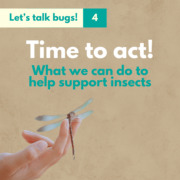
Written by

Emilie Tamo Kamguia
Contents
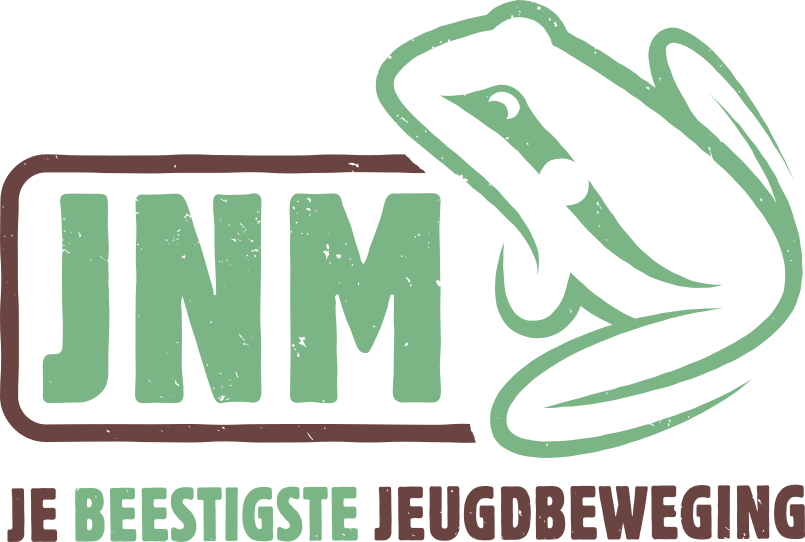
Share this article
In our last article, we explored the numerous challenges insects face. Fortunately, there are many ways to support their survival. As our series on the world of insects concludes, we turn our focus to the solutions and actions that can help protect these vital creatures.
Let’s first delve into how two of our member organisations – UK Youth 4 Nature (UKY4N) and Jeugdbond voor Natuur en Milieu (JNM) – are actively contributing to insect conservation before giving you some practical steps to follow to take action!
UKY4N: Raising Awareness Through Creative Campaigns.
UKY4N empowers young people in nature decision-making in the UK. In 2022, to celebrate the 60th anniversary of Rachel Carson’s iconic book, “Silent Spring”, they organised a youth insect photography competition, which showcased stunning images of UK insects. The winning photos were displayed at an exhibition at Oxford’s Museum of Natural History.
In their Natural Kingdom: Wild Walls campaign, they included insects in murals across UK cities and towns, highlighting local wildlife in decline. A notable mural featured the beautiful tiger beetle in Liverpool. They also create digital art for social media, organise bee walks and hold online workshops.
As part of the “Not so Freshwater” campaign they even hosted a chemical cocktail bar event in London, highlighting the impact of chemical pollution on insects with youth artwork of a mayfly.
What’s Next?
UKY4N plans to continue their successful initiatives, including the “Your Wild Streets” campaign that will advocate for pesticide-free urban areas in the UK to help pollinators thrive!
JNM: Research and Human-Insect Cohabitation
JNM, based in Belgium, focuses on conservation through hands-on projects. A notable example is their work with the Cellar Beetle (Blaps mucronata), a rare species that was first found in their main secretariat building’s basement in 2006 but then thought extinct after the building was renovated in 2016, disturbing the beetle’s habitat. However, five years later, a fresh dead specimen was found, and after an extensive search, 15 living specimens were discovered.
What makes this beetle so special?
20 to 25 mm in size with pitch-black, with smooth shields and long legs, they require old, not-too-clean cellars with high humidity, stable temperatures, and lots of hiding places. They are now quite rare in Belgium, making JNM’s discovery even more significant. Originally, the Cellar Beetle was found mainly in southern Europe, living in caves and later adapting to human-made cellars.
Inside JNM, a dilemma arose because the beetles were found in the same basement where tents and camp materials were stored, which need to be kept dry. To address this, JNM initiated a survey where beetles were caught, marked, and released back into a more humid basement to better suit their needs.
Taking action: How can YOU help
In your garden:
- Maintain insect habitats: Plant native flowering plants and leave some areas of your garden wild to provide shelter and food for insects. Did you know that branches left on the ground and dead wood are extremely useful and provide micro-habitats for the fauna?
- Create water sources: Provide small, shallow water sources like bird baths or shallow dishes with stones for insects to drink from, especially during hot and dry periods.
- Reduce pesticide use: Minimise or eliminate the use of pesticides in your garden to create a safer environment for pollinators and other beneficial insects.
With your community:
- Support conservation efforts: Get involved with local conservation groups and participate in initiatives like habitat restoration.
- Participate in insect monitoring: Join insect monitoring programs to help scientists track insect populations and health. Your observations can contribute valuable data for conservation efforts
- Advocate for pesticide-free Zones: Work with your local community to create pesticide-free zones in public spaces, such as parks and gardens, to protect pollinators.
- Educate others: Share your knowledge about the importance of insects with friends, family, and the community. Host workshops, give talks, or use social media to spread awareness.
By highlighting these inspiring examples and offering practical steps, we hope to empower you to take action and make a difference in insect conservation. You can help ensure a future where insects continue to thrive and play their crucial roles in ecosystems!
More articles about biodiversity
Time to Act! – What can we do to support insect conservation
https://yeenet.eu/wp-content/uploads/2024/06/insect-campaign-4.png 540 540 YEE https://yeenet.eu/wp-content/uploads/2018/11/logo-yee-728x1030.png YEE2024-06-28 11:21:512024-06-28 11:27:25Time to Act! - What can we do to support insect conservation
18 h/ week
12 EUR/hour
remote
1 year contract
Start 1st August 2024
YEE is seeking a Communications and Campaigns Coordinator
YEE is looking for a part-time Communications and Campaigns Coordinator, to work with the organisation’s advocacy portfolios. The work will be mainly centred on the deliverables of the Environmental Law Portfolio.
The Communications and Campaigns Officer will be responsible for creating content for the organisation’s social media platforms and the website, for developing communication strategies and campaigns, and for helping the advocacy projects produce various visual content such as infographics and designs for articles/booklets.
This position is remote, and requires 18 hours of work per week, with a gross salary of 12 EUR/hour. The position will run from 01/08/2024 to 31/07/2025 (with possible extension upon funding).
Application deadline: 10th July 2024
Your responsibilities
- ⚬ Create and produce informational content about events, resources and activities of the different advocacy portfolios
- ⚬ Consistently create social media content for Instagram, LinkedIn, Facebook, Twitter and TikTok
- ⚬ Proof-read and publish articles and handbooks on topics related to the projects
- ⚬ Work closely with the Communications team to develop communications material
- ⚬ Create and design infographics nd visual designs to support policy briefs and handbooks
- ⚬ Participate in weekly department-, project- and staff meetings
- ⚬ Support the Advocacy Working Group’s campaigns and projects by helping with articles, creating social media posts and advising on communication strategies
- ⚬ Update the visual identity and communications strategy for the Environmental Law project
- ⚬ Filming and producing reels, short videos and TikToks related to topics of Environmental Law
- ⚬ Recruiting and collaborating with influencers to create content
- ⚬ Producing social media content related to Environmental Law and Climate Litigation
- ⚬ Working on communications material for the Climate Law Hub (which YEE is a founder of)
- ⚬ Assist the YEE team in conducting the communications deliverables assigned to YEE for our communications contributions to the BeLIFE consortium
Candidates we are looking for
- ⚬ Working proficiency in English
- ⚬ Be based in Europe for the whole time of the contract
- ⚬ Eligible applicants must be younger than 35 years of age
- ⚬ Be aligned with YEE’s core values and mission
- ⚬ Has a background in or is active with environmental activism
- ⚬ Has a good eye for visuals, and is eager to create creative visual solutions for communications
- ⚬ Has previous experience with creating social media content, including reels/videos in the context of environmental activism, or in the context of youth mobilisation through social media
- ⚬ Has a good understanding of EU environmental policy and law
- ⚬ Has a good understanding and ability to read information regarding EU governing bodies and policies/laws
- ⚬ Is familiar with an international working environment, but is also comfortable working in a smaller team
- ⚬ Is creative and innovative, comes up with new ideas and suggestions for communications
- ⚬ Is at ease in taking the initiative and suggesting new solutionsunder this regime
Call for a Communications and Campaigns Coordinator
https://yeenet.eu/wp-content/uploads/2024/02/hiring.png 250 250 YEE https://yeenet.eu/wp-content/uploads/2018/11/logo-yee-728x1030.png YEE2024-06-25 11:00:052024-07-18 11:12:56Call for a Communications and Campaigns Coordinator
Written by

Ashton Melfor
Contents


Share this article
Our last article on the history of human insect coevolution already indicated that insects face many challenges. This week the journey continues and we will dive deeper into the challenges faced by insects. We will do this from the perspective of the humble jet, very important hoverfly.
What even is a hoverfly and why are they so important?
Here already we encounter our first challenge. Many arthropod groups are not well understood or equally loved as other arthropod groups by the average European. One such group are hoverflies.
The unknown pollinators
Hoverflies are close relatives of common house flies but unlike house flies are important pollinators instead of decomposers. That’s right, bees and butterflies have another important coworker. Due to the shape of their mouthparts, hoverflies prefer to visit flat instead of cone-shaped flowers. Even though they have important ecological roles, they are unfortunately often forgotten when insects are discussed.
The impact of agricultural intensification
The second challenge faced by hoverflies, as well as many other insects, is agricultural intensification. It is not just the growing of monoculture crops that threatens many hoverfly species, but excessive pesticide use has significant negative effects both on farmland and outside.
Ever heard of a pesticide drift?
This is when, oftentimes invisible, clouds of pesticide travel through the air and into surrounding areas. Because of this, even insects that are kilometres away in a protected area can experience negative consequences of pesticide use.
The impact of urban development
We as humans like to modify our environment to suit our needs. In doing so we often change very important habitat characteristics that are very important for other organisms.
One of these habitat modifications impacting hoverflies is obstructing and controlling the flow of natural waterways. Certain hoverfly species depend on the consistent flow of clean water for the proper development of their larva. This is of particular concern for wetland hoverflies.
When development does not consider the ecological impacts we risk losing valuable habitat characteristics for hoverflies and other insects. Once an ecosystem is lost it can be hard to get it back.
The impact of urban development
We as humans like to modify our environment to suit our needs. In doing so we often change very important habitat characteristics that are very important for other organisms.
One of these habitat modifications impacting hoverflies is obstructing and controlling the flow of natural waterways. Certain hoverfly species depend on the consistent flow of clean water for the proper development of their larva. This is of particular concern for wetland hoverflies.
Urban and industrial development can destroy hoverfly habitat like flower rich meadows, but it can also create opportunities. Promoting flower rich roadsides and changing mowing regimes in urban environments can create additional habitat for hoverflies closer to home.
When development does not consider the ecological impacts we risk losing valuable habitat characteristics for hoverflies and other insects. Once an ecosystem is lost it can be hard to get it back.
Prioritising Habitat Conservation for Arthropod Species Protection
The final challenge we will look into might seem obvious but is not always considered. There are currently 340 hoverfly species considered threatened and many more arthropod species. So it is simply not possible to put species specific conservation measures in place.
Thankfully, on the EU level hoverflies have received attention. But the same can not be said for other arthropod groups. The most effective way to address this challenge is to focus on conserving suitable habitats (not just those under the habitats directive) and enacting policies that take a holistic approach to problem solving. In this regard the EU farm to fork strategy and Nature Restoration Law are crucial.
You as an individual can also contribute by providing hiding places for these insects (dead wood is much appreciated), planting native flowering plants and using less pesticides in your garden.
More articles about biodiversity
Hovering on the edge
https://yeenet.eu/wp-content/uploads/2024/06/insect-campaign-3.png 540 540 YEE https://yeenet.eu/wp-content/uploads/2018/11/logo-yee-728x1030.png YEE2024-06-21 10:24:132024-06-28 11:30:32Hovering on the edge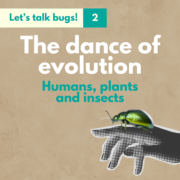
Written by

Emilie Tamo Kamguia
Contents






Share this article
Have you ever wondered how the intricate relationship between insects, plants, and humans came to be? Let’s travel through time to uncover the fascinating coevolution of these vital partners that had a major role in shaping our modern world.
In the Beginning: Insects and Plants
The earliest insects emerged around 400 million years ago, long before humans. As plants began to colonise land, insects evolved to exploit the resources that plants provided.
Did you know pollinating insects are far more diverse than bees? They include species of flies, beetles, moths, butterflies, wasps as well as ants. Those pollinators coevolved with flowering plants, called angiosperms, that appeared around 170 million years ago. In exchange for pollinating services, those plants reward insects with food such as nectar. Pollen itself is a source of nutrients as well for some species like wasps! This mutually beneficial relationship allowed angiosperms to diversify extensively.
We owe the most famous example of this coevolution to Darwin. The scientist predicted that Angraecum sesquipedale, a Malagasy orchid with 30cm nectar spurs, must be pollinated by a hawk moth with an extremely long tongue (proboscis). Some plants like Ophrys apifera even mimic the appearance and scent of female bees to attract male pollinators, thus exploiting this relationship.
The Agricultural Revolution: Insects and Humans
As humans transitioned from hunter-gatherer societies to agricultural ones around 10,000 years ago, the role of insects became even more crucial. Early farmers harnessed the power of pollinators and pest controllers. The domestication of honeybees such as the European honeybee (Apis mellifera), for honey and crop pollination is one of the most significant examples of the use of insects for agricultural purposes.
However, not all interactions were beneficial. The European corn borer (Ostrinia nubilalis), became notorious for its ability to devastate corn crops. This led to the development of early pest control methods, illustrating the complex and sometimes adversarial relationship between humans and insects.
The Industrial Age : Insect Decline
The industrial revolution led to significant changes in agriculture in order to increase productivity: mechanisation, modernisation, monoculture and increased pesticide use. They all heavily altered the dynamics between humans, plants, and insects. In the mid-20th century, following World War Two, the widespread use of DDT* caused severe declines in pollinator populations. This broad spectrum pesticide kills pests and other insects such as bees without distinction and is responsible for long term toxicity.
This example among many led to a reevaluation of pest management practices and interdiction of particularly dangerous molecules. Therefore, DDT was banned from agricultural use worldwide in 2001.
*DDT : Dichlorodiphenyltrichloroethane
Contemporary times and Beyond: Insect Conservation
In contemporary times, the situation has grown even more complex. Human induced threats such as habitat loss, climate change, and spreading of invasive species threaten insect populations, as well as human health. Showing a renewed appreciation for insects’ roles in our ecosystems and everyday life, conservation efforts are made to restore and protect their habitats and diversity. In Europe, initiatives such as the EU Pollinators Initiative aimed to address these challenges by promoting sustainable agricultural practices, conservation strategies, and supporting research on pollinator health. Numerous environmental organisations are advocating for reduced pesticide use and increased biodiversity in agricultural landscapes to support insect populations.
As we look to the future, the coevolution of humans, plants, and insects will undoubtedly continue to shape our world. Understanding and preserving these relationships is crucial for maintaining biodiversity and ensuring food security!
More articles about biodiversity
A Coevolution Tale: Humans, Plants, and Insects
https://yeenet.eu/wp-content/uploads/2024/06/Hidden-in-sight11.png 540 540 Eva Kloudová https://yeenet.eu/wp-content/uploads/2018/11/logo-yee-728x1030.png Eva Kloudová2024-06-07 14:03:382024-06-07 14:09:24A Coevolution Tale: Humans, Plants, and InsectsCall for internal auditors 2024/2025

uneven
volunteering
remote
elected
Start 1st August 2024
Open call for the Internal Auditors 2024/2025
Youth and Environment Europe (YEE) is pleased to announce the open call for internal auditors 2024/2025. The internal auditors will be voted in during our Annual Meeting 2024.
Internal auditors are independent individuals with the function of providing an objective assessment of the organisation.
How to apply?
All interested candidates are invited to fill in the application form including a CV by the 11th July 2024, 23:59 CEST.
Application deadline: 15th June 2024
The Internal Audit (IA) is a monitoring organ. The aims of the IA are:
- To assess the quality of YEE project implementation;
- To evaluate the work of the Board and Secretariat;
- To report the above to the Member Organisations (MOs);
- To provide feedback and suggestions for improvement to the network.
The IA is conducted once per year. The internal auditors are expected to carry out the audit at the YEE office for 2 full days at least 60 days before the following General Assembly.
Internal Auditors are entitled to receive 100% reimbursement of travel costs (as long as YEE Travel Policy is respected), accommodation, and vegetarian food for the days when the IA is carried out.
Call for internal auditors 2024/2025
https://yeenet.eu/wp-content/uploads/2024/02/hiring.png 250 250 Eva Kloudová https://yeenet.eu/wp-content/uploads/2018/11/logo-yee-728x1030.png Eva Kloudová2024-06-03 13:59:072024-07-18 11:12:43Call for internal auditors 2024/2025Call for board members 2024/2025

5 h/ week
volunteering
remote
elected
Start 1st August 2024
Open call for the Executive Board 2024/2025
Youth and Environment Europe (YEE) is pleased to announce the open call for the Executive Board 2024/2025. The members of the board will be voted in during our Annual Meeting 2024.
The Executive Board is responsible for making all the decisions between the Annual Meetings and the implementation of the Work Plan accepted by the General Assembly, together with the Secretariat.
How to apply?
All interested candidates are invited to fill in the application form including a CV and nomination letter from any of YEE member organisations by the 15th June 2024, 23:59 CEST.
Application deadline: 15th June 2024
By assuming the position of a Board Member you will:
- Get an excellent opportunity to work in an ambitious multinational team
- Get international exposure and hands-on experience in your selected domain
- Develop your competencies and acquire a range of skills that will be beneficial for your future
- Attain concrete opportunities for your education or career development
Who are we looking for:
The position of a Board Member of YEE is voluntary and remote. All members of the Board assume responsibilities according to the position they take.
The positions are as follows:
- • Chairperson – governance and chairing of the Board,
- • Treasurer – fundraising, External Relations Officer – external partnerships and visibility,
- • Project Officer – YEE projects,
- • Communications Officer – YEE newsletter and social media,
- • Member Organisations Officer – Regional teams and membership management.
- • External Relations Officer – Partnerships
Learn more about each position in our Board Members Policy.
Call for board members 2024/2025
https://yeenet.eu/wp-content/uploads/2024/02/hiring.png 250 250 Eva Kloudová https://yeenet.eu/wp-content/uploads/2018/11/logo-yee-728x1030.png Eva Kloudová2024-06-03 13:42:302024-06-25 11:15:43Call for board members 2024/2025YEE’s Annual Meeting 2024
from 12th to 14th July 2024 in Prague, Czechia
Practical information
-
When
12th July to 14th July 2024
-
Where
Prague, Czechia
-
Fees
Fully funded for official delegates
-
How
Hybrid

This event it funded by the European Union.
Share This Event
Youth and Environment Europe would like to announce that the Annual Meeting and the General Assembly of YEE will take place on from 12th to 14th July 2024 in Prague, Czechia.
We are happy to say that it will take place in person with an option to join in remotely. Hereby, we would like to ask each YEE member organisation to appoint a delegate to represent and vote on behalf of your organisation during the General Assembly (GA).
Food, accommodation, and visa expenses or the duration of the annual meeting will be covered in full. Travel expenses will be reimbursed according to the Erasmus+ Programme Guide 2024.
How can you join?
- As a Member organisations delegate (contact your local organisation).
- Guests and YEE team (contact the YEE team).
Open calls
Become a board member
Responsibilities
- Making all the executive decisions between the Annual Meetings
- Supervising the implementation of the Work Plan
- Fulfilling their specific position's responsibilities
Become an internal auditor
Responsibilities
- Assessing the quality of YEE project implementation
- Evaluating the work of the Board and Secretariat
- Providing feedback and suggestions for improvement to the network
Have questions? Get in touch!
YEE’s Annual Meeting 2024
https://yeenet.eu/wp-content/uploads/2024/06/annual-meeting.png 1080 1080 YEE https://yeenet.eu/wp-content/uploads/2018/11/logo-yee-728x1030.png YEE2024-06-03 13:05:382024-07-23 10:16:36YEE's Annual Meeting 2024Our mission
 YEE aims to unite environmental youth non-profit organisations in Europe in order to enhance international cooperation, increase knowledge about the climate crisis, raise awareness of environmental problems and to strengthen participation of youth in environmental decision-making.
YEE aims to unite environmental youth non-profit organisations in Europe in order to enhance international cooperation, increase knowledge about the climate crisis, raise awareness of environmental problems and to strengthen participation of youth in environmental decision-making.
Get in touch
Vinohradská 2165/48
120 00 Praha 2 – Vinohrady
Czech Republic
E-mail: yee@yeenet.eu


Financially supported by the European Youth Foundation of the Council of Europe. The views expressed do not necessarily reflect the official position of the Council of Europe



